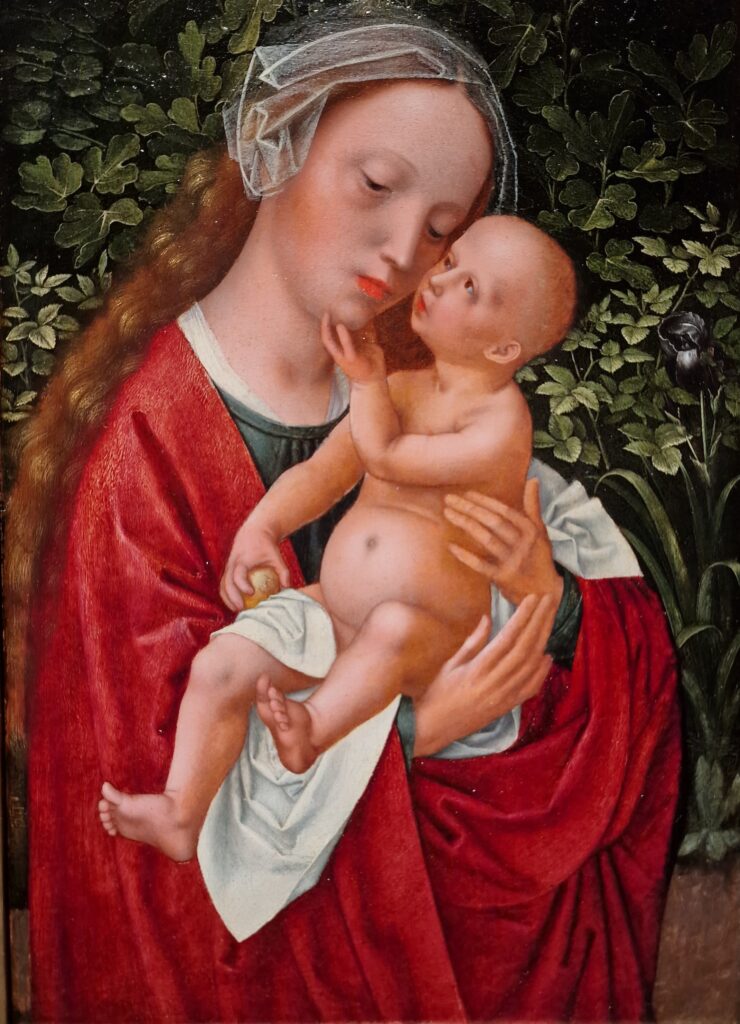Flemish School circa 1520
The Madonna and Child against a Leafy Background

Essay:
The label au verso, written in a 17th Century hand (in Italian) reads:
"Questo quadro della B.[Beata] Vergine era di San Filippo Neri, quale teneva a capo al suo letto, e baciava mattina e sera dopo a Sua oratione. Donato dalli PP. della Chiesa ... alla Marchesa Rangoni"
...which roughly translates into English as follows:
This painting of the Blessed Virgin belonged to San Filippo Neri, who kept it at the head of his bed and kissed it morning and evening after saying his prayers. Given by the [Padre Pie ie fathers?] of the Church... to Marchesa Rangoni.
Saint Philip Neri (1515-1595), known as the 'Amabile Santo', was an Italian priest noted for his ascetic lifestyle and altruistic work amongst the poor and needy. He was beatified by Paul V in 1615, and canonized by Gregory XV in 1622. The Saint founded a society of secular clergy called the Congregation of the Oratory. The Oratorians still today form an active part of the community within the Roman Catholic Church.
We are grateful to Father Rupert McHardy of the London Oratory, Brompton Road, for kindly assisting us in researching the provenance of this painting within the Oratory's archives. He writes (in excerpts):
"The provenance seems fairly secure. The handwriting is contemporaneous. Sadly the inventory of objects in St. Philip Neri's room made the day after his death in 1595 is vague and simply mentions various paintings of the Madonna among the artifacts.
As to the Rangoni family they did have a very strong connection with the Saint. In Antonio Cistellini's work, San Filippo Neri, 1989, we find reference in the index to Baldassare Rangoni... He further mentions (note on p. 1277, vol 2) that Giulia Orsini, who married Baldassare Rangoni, did much for the Oratory.... It would seem probable though that... Marchesa Rangoni was indeed given this precious relic of St Philip's devotion to the Madonna by the fathers of the Oratory in recompense for the family's close connection with St Philip."
Provenance:
From the collection of Saint Philip Neri, according to a 17th Century paper label on the reverse of the panel;
Donated to Marchesa Rangoni on the death of the Saint, according to the label;
Private collection, Italy